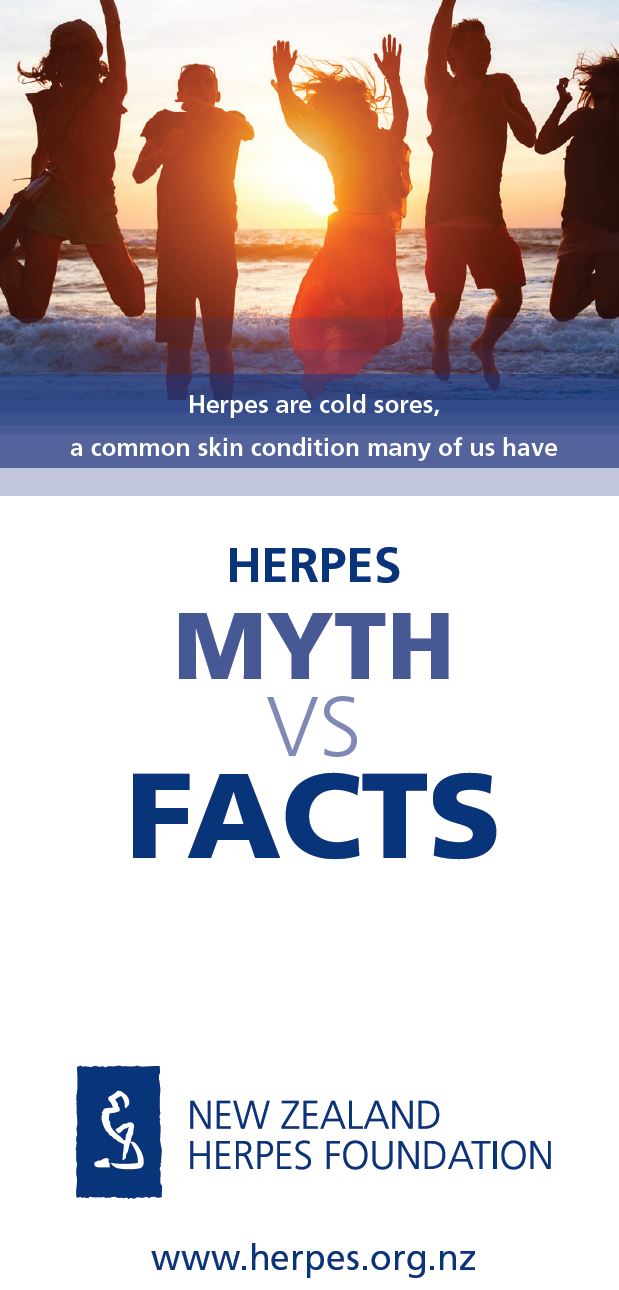Herpes simplex virus
Also called herpes, cold sores, or gingivostomatitis
Key points about herpes simplex virus
- Herpes simplex is a virus (HSV) that causes oral herpes or cold sores around the mouth or face, and genital herpes.
- There are 2 types of HSV.
- HSV type 1 (HSV1) most commonly causes cold sores, but it can also cause genital herpes.
- HSV type 2 (HSV2) is the usual cause of genital herpes, but it can also infect the mouth.

HSV invades the outer layer of the skin (the epidermis), sometimes causing fluid-filled blisters to appear. From here, it travels along the nerve paths to the nerve roots where it lies dormant (or asleep). From time to time it can waken causing a recurrence of pain or blisters.
The virus is spread by skin to skin contact, directly at the site of the breakout. HSV is also shed in saliva and genital secretions, both during a clinical attack and for some days or weeks afterwards. The amount shed from active lesions is 100–1000 times greater than when it's inactive.
When a person is infected with herpes for the first time, the episode is called a primary infection. Symptoms vary from none at all through to moderate discomfort. This first outbreak starts 1–3 weeks after the virus has invaded the skin and subsides within a few weeks.
An outbreak has 4 stages:
- A tingling feeling in the skin.
- Slight swelling and then development of a number of fluid-filled blisters, which are often painful.
- The blisters burst and form clusters, leaving fluid-filled sores.
- The sores eventually dry, scab over and heal without scarring after 8–10 days.
The virus can spread until the sores are completely covered by scabs. Once healed, the virus can still be shed (or passed onto someone else), but the risk is much lower.

Image credit: DermNet NZ
If sores develop inside the mouth, as well as outside, it's often called gingivostomatitis. This should be treated with antiviral medicine (eg, aciclovir or valaciclovir) and pain relief as sores and blisters lining the mouth and throat make it harder to eat and drink and take longer to heal – up to 14 days.
Herpes simplex can also cause infection in other places:
- Herpetic whitlow – small red blisters or tender lumps on fingers and hands.
- Scrum pox – facial blisters in a rugby player from direct contact.
- Infants may develop mouth sores when exposed.
Recurrences
Once you have been infected, the virus remains hidden in your nerves for the rest of your life and becomes active again from time to time. Triggers can include a fever, a common cold, UV radiation (exposure to sunlight), extreme tiredness or lowered immune function. Some people have regular outbreaks or recurrences, while others have none. With time, these become less frequent.
Avoiding contact with active HSV blisters will help prevent becoming infected with herpes yourself. However, many people contract herpes unknowingly and once you have an episode of herpes you will likely have it for life.
During an episode, either facial or genital, you are infectious from the start of the episode to the healing of the last ulcer. During this time the virus can be transmitted (passed on) to other people and, in rare cases, can be transferred to other areas of the body.
To help prevent spread, you should avoid:
- Kissing anyone or sharing drinking utensils when you have a cold sore present.
- Having oral sex when you or your partner have facial or genital sores.
- Sharing towels and face flannels.
- Using saliva to wet contact lenses if you have sores around your mouth.
- Sunburn – apply sunscreen to face and sunscreen lip balm to your lips.
HSV can be dangerous to young babies and children, therefore make sure you wash your hands and avoid kissing them during or recently after an episode.
Herpes – the key facts(external link) NZ Herpes Foundation
The facts – a guide for people with herpes simplex [PDF, 597 KB]The NZ Herpes Foundation, 2017
Herpes myth vs fact [PDF, 260 KB] New Zealand Herpes Foundation, 2017
Brochures

The NZ Herpes Foundation, 2017

New Zealand Herpes Foundation, 2017
Credits: Healthify editorial team. Healthify is brought to you by Health Navigator Charitable Trust.
Reviewed by: Dr Bryony Harrison
Last reviewed:
Page last updated:





